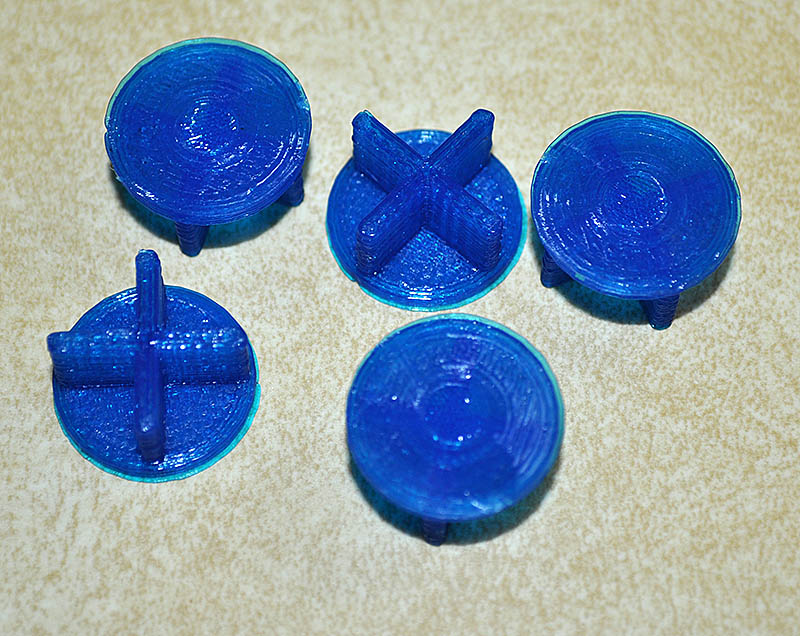Last month Shane Graber, on a whim, threw up a batch of 25 3D-printed frag plugs on eBay. At $9 shipped to my door, I snagged them up immediately just so I could see what they’re all about. Turns out Shane has two designs he’s working with, so he doubled what he sent and we get to look at both.

For someone who had never seen anything 3D printed first-hand, Graber’s plugs are surprisingly rugged. They were shipped in nothing more than a padded mailer, and all 50 plugs (and the little 3D printed robot bonus!) arrived without damage. I should also point out, these plugs are extremely lightweight. They DO sink though!
One of the questions that must come to mind right away is “what are these frag plugs made from?”. Per Graber’s auction description, “Each of these frag plugs are printed on a 3D printer using a saltwater and coral-safe plastic called PLA. PLA is a recyclable bioplastic that is a made from renewable resources, so it is an environmentally friendly alternative to Aragacrete and ceramic frag plugs. There is no need to cure these plugs before use like many Aragacrete plugs as they are pH neutral and will not affect your tank’s pH nor alkalinity.”
The Gen 1 frag plug design, in blue, has a connected X base formation.


I found the Gen 1 plug design to be extremely rigid. From an eggcrate standpoint, it fits loosely although Graber points out that different eggcrate has different cell sizes; thus 13 x 13 mm plugs fit 13 X 13 mm eggcrate best. Since everything about the design is digital, in theory Graber could configure your custom frag plugs to fit whatever cell size you wanted with some basic scaling of the digital model.
Again, I have to say I was extremely impressed by the performance of the 3D printed material. It’s amazing to see how strong the 3D printed material truly is; I was unable to break any of the feet off the Gen 1 frag plugs by hand.
Looking at the Gen 1 plugs, it’s easy to see why Shane didn’t stop with his first design, but instead investigated a second design. The Gen 2 plugs feature a different design to the “stem”, disconnected > < feet which fit more snugly in my eggcrate.

Unlike the Gen 1 design, these Gen 2 feet can be snapped off by hand, but only when you apply the right force in the right direction.
Otherwise, they are every bit as strong as the Gen 1 design. Being able to remove the feet from the plug is a convenient addition, and overall, if I had to pick, I think I’d go with the Gen 2 design over the Gen 1. Of course, you really don’t have to decide; Graber can print up either design on an as-needed basis. This truly takes the concept of “just in time inventory” to a whole new level.
Both frag plug designs feature a “divot” or depression on the top of the flat surface. This is meant to provide a slight cup where a frag might be placed and glued. In my opinion, the design of the cup was too shallow; it didn’t really provide the function you’d expect from the intended design.
When it comes down to color coding, we can think of several reasons a coral farmer might benefit from using unique colors for particular purposes. Graber makes the obvious leap to use color as a means to sort frags based on price. But you could take it a step further, using colors to denote particular genetic varieties of similar species, or a particular color might be used to track the month during which the coral was propagated. Graber lists 8 colors currently available to him, with many more available upon request.

I have yet to see how these plugs perform over the long term, but they’re a promising new idea for the coral farmer who likes to tinker. Shane currently has frag plug packs available directly via eBay at this time. Drop him a line; Graber is very interested to know “what people would want out of a 3d printed frag plug – dimensions, options, etc”.



